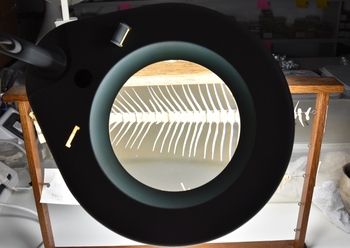National Zooarchaeological Reference Resource (NZRR)
Eva Fairnell, David C Orton, 2017. https://doi.org/10.5284/1043267. How to cite using this DOI
Data copyright © Bournemouth University, Cardiff University, Durham University, Grant Museum of Zoology, Historic England, The Manchester Museum, Museum of London Archaeology, Natural History Museum, Oxford University Museum of Natural History, SHD Zooarchaeology, University of Birmingham, University of Edinburgh, University of Leicester, University of Nottingham, University of Sheffield, Department of Archaeology, University of Southampton, University of York, York Museums Trust unless otherwise stated
This work is licensed under the ADS Terms of Use and Access.
Primary contact
Dr
David C
Orton
University of York
BioArCh
Environment Building
Wentworth Way, Heslington
York
YO10 5DD
England
Resource identifiers
- ADS Collection: 2483
- DOI:https://doi.org/10.5284/1043267
- How to cite using this DOI
Overview

The NZRR currently (January 2017) comprises data from 18 collections: the participants include Historic England, the universities of York, Sheffield, Leicester, Durham, Birmingham, Nottingham, Bournemouth, Southampton, Cardiff and Edinburgh, museums from York, Manchester, Oxford and London, and one private collection. The specimens held by those collections can be searched together and filtered by taxonomic level and sex. Further details, such as age and carcass metrics, can be browsed, and full details downloaded.
As not all collections hold the same information in a standardised format, a null return on a more detailed search does not mean more data are not available. After querying the data held in the NZRR, the next step should be to contact the appropriate curator about any specimens of interest.
Regarding taxonomy, the accepted species names provided by the Global Biodiversity Information Facility (GBIF), have been used to build up a nomenclature concordance table. Common names can be used for a search but, to avoid the risk of missing specimens, using the Latin name is advisable.
Image: © The University of York, photographer Luke Spindler.








